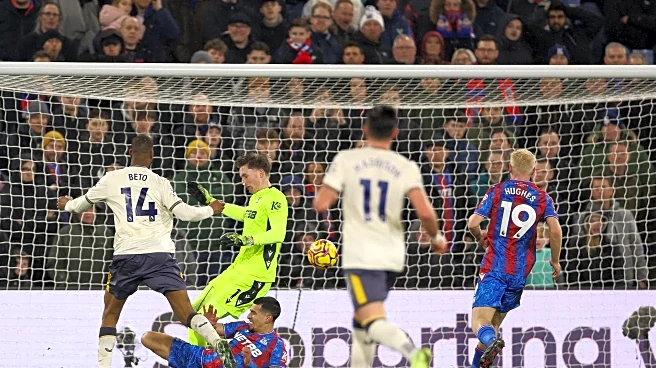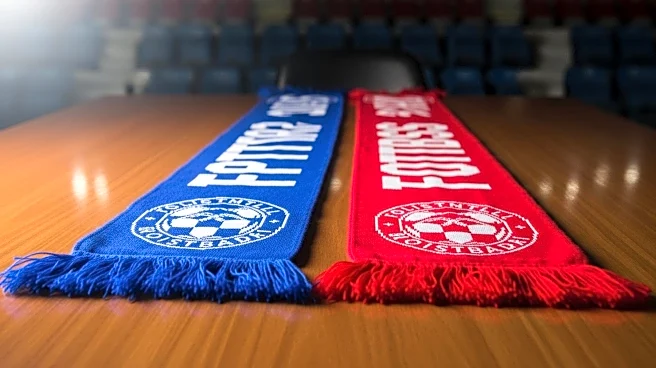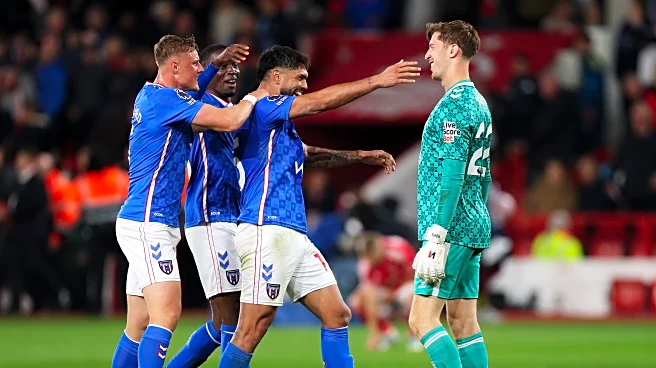What's Happening?
Crystal Palace, under the management of Oliver Glasner, has achieved significant success with a tactical system that has drawn skepticism at other clubs, such as Manchester United. Glasner, who employs a 3-4-2-1 formation, has led Crystal Palace to a series of victories, including a recent win against Dynamo Kyiv. This system, which has been effective for Glasner at previous clubs like Lask, Wolfsburg, and Eintracht Frankfurt, emphasizes a solid defensive shape and quick counterattacks. Despite its success at Crystal Palace, the system's effectiveness is questioned in different contexts, particularly at clubs with different expectations and player capabilities.
Why It's Important?
The success of Glasner's system at Crystal Palace highlights the importance of tactical adaptability in football. While the 3-4-2-1 formation has worked well for Palace, it underscores the challenges faced by larger clubs like Manchester United, where there is an expectation to dominate possession and play a more attacking style. This situation illustrates the broader tactical diversity in football and the need for managers to tailor their strategies to the specific strengths and weaknesses of their teams. The discussion around Glasner's potential move to a major club also reflects the ongoing search for innovative managerial approaches in the sport.
What's Next?
As Glasner's contract with Crystal Palace is set to expire at the end of the season, speculation about his future is likely to intensify. Clubs seeking a manager with a proven track record of tactical innovation may consider Glasner as a candidate. However, any potential move would require careful consideration of whether his preferred system could be adapted to fit the new club's squad and expectations. The outcome of these considerations could influence managerial appointments and tactical trends in European football.
Beyond the Headlines
The success of Glasner's system at Crystal Palace also raises questions about the cultural and tactical preferences in English football. Historically, English teams have favored formations with a back four, influenced by the success of the 1966 World Cup-winning team. Glasner's use of a back three challenges these conventions and suggests a potential shift in tactical thinking. This development could encourage other managers to experiment with alternative formations, potentially leading to a more diverse tactical landscape in the Premier League.











